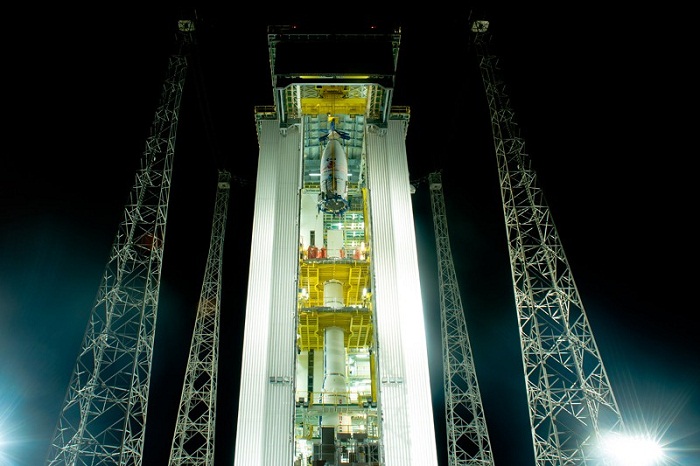Spacecraft that will put Einstein to the test ready for lift-off

“Something like four per cent of the universe is the stuff that we could see,” says Paul McNamara, who is a project scientist for LISA Pathfinder. We know little about the other 96 per cent, but some of it is likely to have a gravitational signature, he says. “Certainly dark matter does. Dark energy, who knows? So when we launch this thing, I would bet that we’re going to see things we never predicted.”
It’s been 100 years since Albert Einstein presented his theory of general relativity, which describes space and time as a unified fabric, curved by the presence of matter and radiation within it. So far it has passed every test physicists have conjured up – but one prediction remains unverified.
Einstein predicted that the movement of massive objects changing the curvature of space-time should produce waves in that fabric. But so far, none have been definitively detected.
Catch a wave
The trouble is, the fabric is very stiff and hard to bend, says McNamara. If two neutron stars were to merge in a nearby galaxy, the resulting wave would squish and stretch the space-time near Earth by about a millionth of the diameter of an atom as it passed through us. Einstein thought we would never develop the technology to detect such tiny events.
He was wrong. Today we can make measurements accurate to 10-20 metres – 10,000 times smaller than a proton – with instruments called laser interferometers. The Advanced LIGO experiment in the US, freshly revamped to boost its sensitivity, fires lasers through 4 kilometre-long tunnels and measures minute changes in the distance travelled by the beams.
Many physicists are hopeful that LIGO will make the first direct observation of gravitational waves in the next few years. But taking the technology into space will vastly expand what we’re able to detect. eLISA’s three detectors will form a triangle with sides a million kilometres long. With much longer arms than the detectors on Earth, it should be sensitive to gravitational waves from many more sources. It will also pick up lower frequency waves, showing us a different set of objects, such as pairs of supermassive black holes.
“We’ll have a much richer playground to look at with eLISA than with the ground-based detectors,” says Andreas Freise from the University of Birmingham, UK, a member of the LIGO collaboration.
LISA Pathfinder will test a condensed version of one of the detectors, consisting of two gold-platinum cubes in free fall. The spacecraft will create a super-quiet environment, shielding the cubes from sunlight, magnetic fields and high-energy particles that could disturb their flight. Lasers will track their movement, measuring any deviations from their expected path.
“By demonstrating that we can take this cube, put it in space, put a spacecraft around it and keep it stable, that gives us the confidence that we can go ahead and build the big space-borne detector,” says McNamara.
It’s no mean feat. “To do these precise measurements is one of the greatest challenges in experimental physics. Doing it in space is even more challenging,” says Freise. “In space, you cannot go back and adjust things. They have to work the first time.”















































